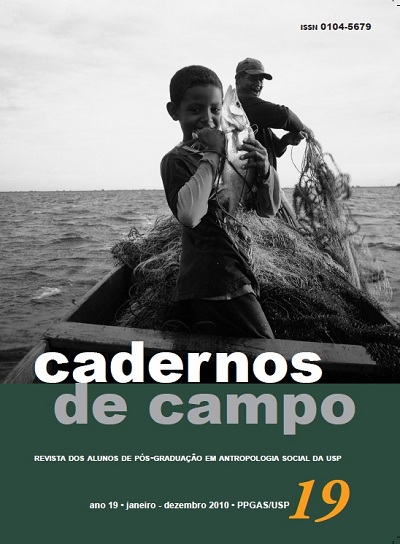Of Double Bodies: Mestiçagem, Mixture and Relation among the Karaja of Buridina (Aruanã - Goiás)
DOI:
https://doi.org/10.11606/issn.2316-9133.v19i19p113-134Keywords:
Mestiçagem, Mixture, Karajá indians of Buridina village, Perspective, Relationship to non-indigenous peopleAbstract
Buridina is a small Karajá village wi-thin the center of the tourist city of Aruanã (Goiás,
Central Brazil), by the Araguaia river side. In the
1970s, its population started a series of marria-
ges with the local non-indigenous people. Today,
most of them are mestiços. This fact, added to this
population’s wide knowledge of and involvement
with the non-indigenous world, often caused Buri-
dina to be stigmatized as acculturated. By conside-
ring interethnic marriages, the children generated
by them and the way the Karajá classify these chil-
dren as a start point to explore the indigenous form
of the relation between indigenous and non-indi-
genous perspectives, this article argues that, for the
inhabitants of Buridina, learning and experiencing
the world of the (non-indigenous) tori does not im-
ply a sort of “cultural loss”. Rather than a process of
acculturation, it is matter of a double bodily expe-
rience in which both perspectives are related to each
other in a divided unit.
Downloads
Download data is not yet available.
Downloads
Published
2010-03-30
Issue
Section
Articles and Essays
License
I authorize Cadernos de Campo Journal of Anthropology to publish the work of my authorship/responsibility, as well as I take responsibility for the use of images, if accepted for publication.
I agree with this statement as an absolute expression of truth. On my behalf and on behalf of eventual co-authors I also take full responsibility for the material presented.
I attest to the unpublished nature of the work submitted
How to Cite
Nunes, E. S. (2010). Of Double Bodies: Mestiçagem, Mixture and Relation among the Karaja of Buridina (Aruanã - Goiás). Cadernos De Campo (São Paulo, 1991), 19(19), 113-134. https://doi.org/10.11606/issn.2316-9133.v19i19p113-134





